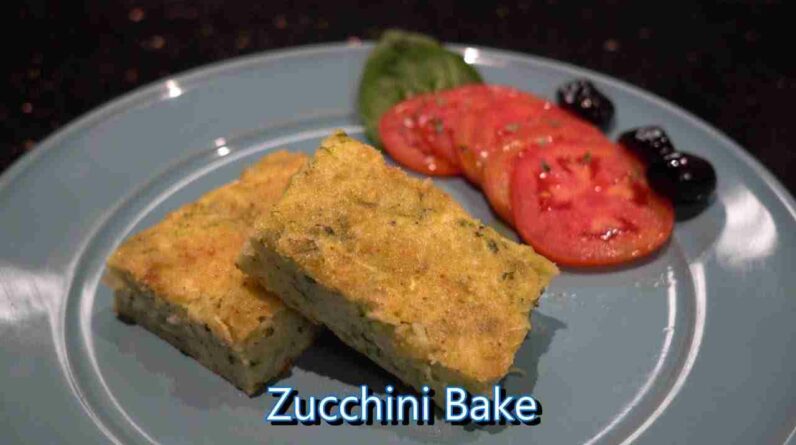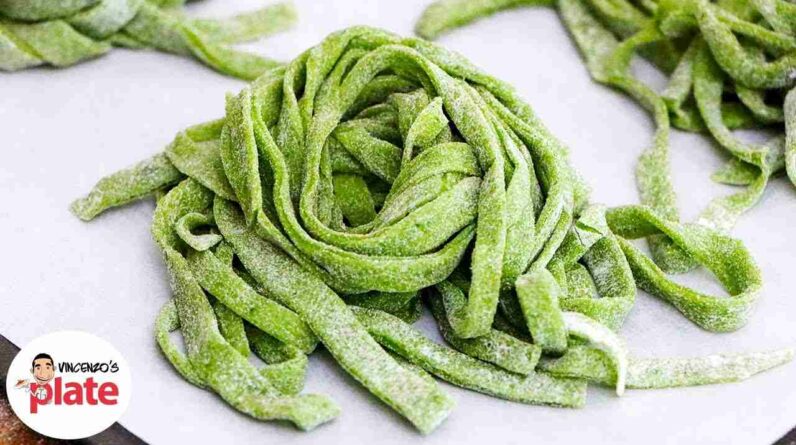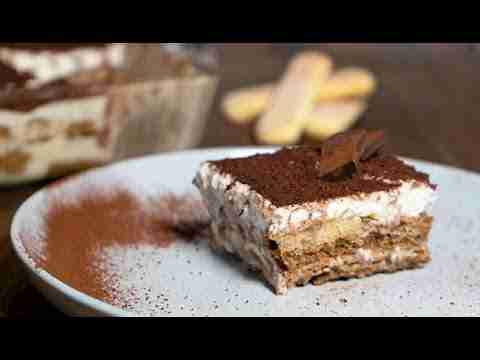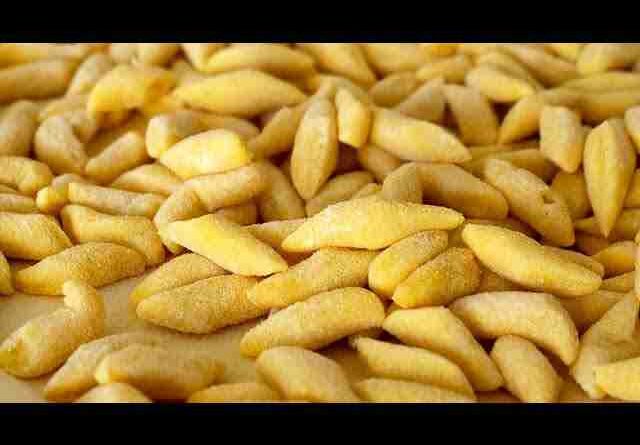Calling all food enthusiasts! Are you one of those people who have always wondered about the difference between prosciutto and pancetta but have been too afraid to ask? Well, fret no more because we are here to demystify these two Italian cured meats for you. Despite their similar origins and appearance, prosciutto and pancetta have distinct flavors and uses in the culinary world. Let’s embark on a journey of flavor and unravel the secrets behind these beloved Italian delicacies.

Overview
Welcome to our comprehensive guide on the difference between prosciutto and pancetta! These two delicious Italian meats may seem similar at first glance, but they each have their own unique characteristics that set them apart. In this article, we will delve into the definitions, origins, cuts of meat, curing processes, smoking techniques, texture and appearance, as well as the flavors of prosciutto and pancetta. By the end, you’ll be a pro at recognizing and appreciating these Italian culinary delicacies!
Definition of Prosciutto
Cured Italian ham
Prosciutto is a type of Italian ham that has been cured, resulting in a delectably flavored meat. The meat used for prosciutto comes from the hind leg of the pig, giving it a distinctive shape and structure. This cured ham has a long history in Italian cuisine and is highly regarded for its delicate flavor and tender texture.
Made from pork
Like most types of ham, prosciutto is made from pork. The quality and breed of the pig contribute to the overall taste and texture of the prosciutto. The meat is carefully selected to ensure the best results during the curing process, resulting in a high-quality product that is beloved by meat enthusiasts around the world.
Dry-curing process
One of the defining characteristics of prosciutto is its dry-curing process. The pork leg is salted and left to mature in a controlled environment for several months. This process draws out the moisture from the meat, which helps develop the intense flavors prosciutto is known for. The time it takes to dry-cure prosciutto varies depending on the desired result, but it typically ranges from around 9 months to up to 2 years.
Aged for several months
During the dry-curing process, the prosciutto is aged for several months. This aging period is crucial for developing the intricate flavors and textures that make prosciutto so distinct. The length of aging can impact the final taste and tenderness of the prosciutto, resulting in variations in flavor profile across different producers and regions in Italy.

Definition of Pancetta
Italian bacon
Pancetta is often referred to as Italian bacon. While it shares some similarities with traditional bacon, pancetta has its own unique characteristics that make it stand out. This flavorful cured meat is a staple in Italian cuisine, adding depth and richness to a variety of dishes.
Made from pork belly
Unlike prosciutto, which is made from the hind leg, pancetta is made from pork belly. This cut of meat comes from the underside of the pig, close to the bacon. The fatty layers in the pork belly contribute to the rich and savory taste of pancetta, making it a popular choice in Italian cooking.
Dry-curing process
Similar to prosciutto, pancetta undergoes a dry-curing process. The pork belly is salted and left to age in a controlled environment. This process draws out the moisture from the meat, resulting in a concentrated flavor and a unique texture. The duration of the dry-curing process for pancetta is typically shorter than that of prosciutto, ranging from a few weeks to a few months.
Unsmoked
While bacon is often smoked to add a distinct flavor, pancetta is traditionally unsmoked. This allows the natural flavors of the pork belly to shine through, with the dry-curing process providing the desired taste and texture. The absence of smoking distinguishes pancetta from bacon and gives it a more nuanced flavor profile.
Origin
Prosciutto: Italy
Both prosciutto and pancetta have their origins in Italy. Prosciutto’s history in Italian cuisine dates back centuries, with specific regional variations in production techniques and flavor profiles. Italy is renowned for its skilled artisans who specialize in crafting this beloved cured ham.
Pancetta: Italy
Just like prosciutto, pancetta originates from Italy as well. It is a staple ingredient in Italian cuisine, widely used in dishes such as pasta carbonara and arancini. The art of making pancetta has been passed down through generations in Italy, with each region having its own preferred seasoning and curing methods.

Cut of Meat
Prosciutto: Whole hind leg
The cut of meat used for prosciutto is the whole hind leg of the pig. This gives prosciutto its characteristic shape, with the bone still intact. The hind leg is carefully prepared and trimmed to remove excess fat, leaving behind a lean and flavorful piece of meat that is perfect for the dry-curing process.
Pancetta: Pork belly
Pancetta is made from pork belly, which is a fatty and flavorful cut of meat. The pork belly is typically rolled and tied with string, creating a compact cylindrical shape. This allows for even curing and results in the signature round slices of pancetta that are commonly seen in recipes.
Curing Process
Prosciutto: Dry-cured with salt
Prosciutto is dry-cured with a generous amount of salt. The salt helps draw out the moisture from the meat, creating a concentrated flavor and preserving the ham. The amount of salt used can vary depending on the producer and the desired result. The prosciutto is then left to age in a controlled environment, allowing the flavors to develop and intensify over time.
Pancetta: Dry-cured with salt and spices
Pancetta is also dry-cured, but it is typically seasoned with additional spices in addition to salt. Common seasonings used in pancetta production include black pepper, garlic, rosemary, and fennel. These spices add depth and complexity to the flavor of the pancetta, enhancing its savory taste and aroma.

Smoking
Prosciutto: Can be smoked
While prosciutto is traditionally dry-cured without smoking, some variations of prosciutto can be smoked. Smoking prosciutto adds an additional layer of flavor and complexity to the ham, creating a unique taste experience. Smoked prosciutto is less common than the non-smoked variety, but it can be found in certain regions or specialty producers.
Pancetta: Unsmoked
Unlike bacon, which is known for its smoky flavor, pancetta is traditionally unsmoked. The focus of pancetta production is on the dry-curing process and the incorporation of flavorful spices. The absence of smoking allows the natural flavors of the pork belly to shine through, making pancetta a versatile ingredient in various Italian dishes.
Texture and Appearance
Prosciutto: Thinly sliced, delicate and tender
Prosciutto is typically served in thin slices, whether it’s enjoyed on its own or used as a topping in sandwiches, salads, or antipasti. The dry-curing process results in a delicate and tender texture, allowing the prosciutto to practically melt in your mouth. The slices of prosciutto have a marbled appearance, with hues ranging from rosy pink to deep red, depending on the aging process.
Pancetta: Rolled and sliced into thin rounds, firmer and more fatty
Pancetta is often rolled and tied with string, creating a compact cylindrical shape that is then sliced into thin rounds. These round slices of pancetta have a firmer texture compared to prosciutto and are known for their rich, fatty flavor. The layers of fat within the pancetta provide a pleasant mouthfeel and add depth to the overall culinary experience.

Flavor
Prosciutto: Delicate and salty
Prosciutto is renowned for its delicate flavor profile. The dry-curing process enhances the natural sweetness of the pork, while the salt used in the curing process adds a pleasant, savory saltiness. The result is a balance of flavors that is both subtle and satisfying. The longer the aging process, the more complex and nuanced the flavors become, with hints of nuttiness and sweetness emerging.
Pancetta: More intense and savory
Compared to prosciutto, pancetta offers a more intense and savory flavor. The combination of the dry-curing process and the use of spices, such as black pepper and garlic, contributes to the robust taste of pancetta. The richness of the pork belly, with its layers of fat and lean meat, enhances the overall flavor, making pancetta a prized ingredient in many Italian dishes.
Conclusion
In conclusion, while prosciutto and pancetta may share some similarities, they have distinct differences that set them apart. Prosciutto, a thinly sliced Italian ham, is made from the hind leg of the pig and undergoes a dry-curing process. It offers a delicate, salty flavor and a tender texture that practically melts in your mouth. On the other hand, pancetta, also known as Italian bacon, is made from pork belly and is dry-cured with salt and a variety of spices. It has a more intense and savory flavor, with a firmer texture and rich, fatty layers.
Both prosciutto and pancetta are beloved ingredients in Italian cuisine, offering unique flavors and culinary possibilities. Whether you prefer the delicate elegance of prosciutto or the bold richness of pancetta, these Italian cured meats are sure to add a touch of gastronomic delight to your dishes. So, the next time you indulge in Italian fare, you can impress your friends and family with your newfound knowledge of the difference between prosciutto and pancetta!










